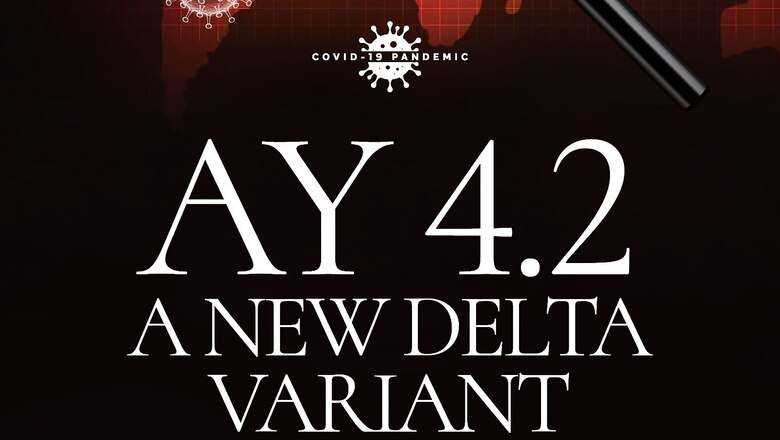
views
As places like the United Kingdom see a spurt in Covid-19 cases, due to a new subvariant of Delta, known as AY.4.2 or Delta Plus, India is not completely in the safe zone either. According to a senior official in National Centre for Disease Control, preliminary investigation shows that the AY 4.2 hasn’t increased the case ratio in India, but it is present here. In fact, apart from AY. 4.2, AY. 33 and AY. 4.1 is also present in India and currently circulating in the country.
The official pointed out that the clusters haven’t increased in India due to this subvariant AY.4.2. yet a close watch is being maintained on this variant for the past four months. AY. 4.2 variant is from the Delta Plus (B.1.617.2) family. Scientists say the AY.4.2-related findings still carry a high level of uncertainty, and it is still early to say that this lineage carries a higher risk of severe illness or death.
On October 21, the US Centers for Diseases Control said it has less than 10 reported cases of AY.4.2 in its database so far, but the UK health authorities have found 15,120 cases of AY.4.2 since it was first detected in July. According to official statistics, the original Delta variant, first identified in India and later classed as Variant of Concern (VOC) in the UK continues to remain overwhelmingly dominant in the UK, making up approximately 99.8 percent of all cases.
WHY IS AY.4.2 BEING TRACKED CLOSELY?
Experts say that given how the Delta variant has predominated samples of Covid-19 globally for more than six months, it was seen as an indication that the novel coronavirus had reached its “evolutionary limit”. But as Danny Altmann, immunology professor at Imperial College London, told CNBC while “the hope has been that delta perhaps represented [the] peak mutation performance achievable by the virus, AY.4 may be starting to raise doubts about this assertion”. He added that the subvariant “needs to be monitored and, so far as possible, carefully controlled”.But for now, experts are of the view that more data would be needed to arrive at any conclusion regarding the threat AY.4.2 represents.
Dr Scott Gottlieb, a former US Food and Drug Administration commissioner, said that “there’s no clear indication that it’s considerably more transmissible”, although he, too, stressed the need to “more quickly characterise these and other new variants”.On the other hand, the director of the US Centres for Disease Control and Prevention (CDC), Rochelle Walensky, said that while AY.4.2 “has drawn some attention in recent days”, there is no cause for concern as yet in the US.“At this time, there is no evidence that the sublineage AY.4.2 impacts the effectiveness of our current vaccines or therapeutics,” she said during a White House Covid-19 briefing. But as experts have pointed out, as long as there are unvaccinated people, the virus will continue to evolve.
But Andrew Pollard, head of the Oxford Vaccine Group, which helped to develop the Oxford-AstraZeneca vaccine, said that it is still too early to flag AY.4.2 as the next big threat.“Discovery of new variants is of course important to monitor, but it doesn’t indicate that that new variant is going to be the next one to replace Delta,” he is said to have told BBC radio, adding that “even if it does, Delta is incredibly good at transmitting in a vaccinated population and a new one may be a bit better but it’s unlikely to change the picture dramatically from where we are today”.
Read all the Latest News , Breaking News and IPL 2022 Live Updates here.













Comments
0 comment